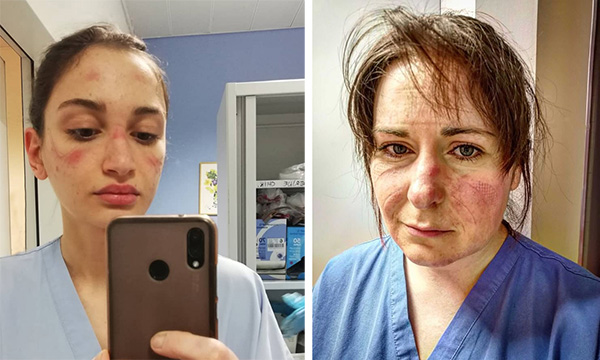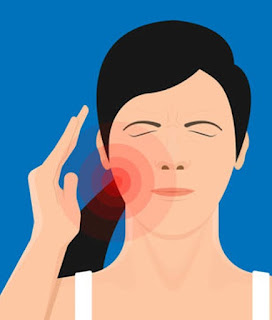Adverse Effects of Facemasks
Quarantines, masking and physical distancing measures are needed to stop Covid-19 pandemic and save lives, but as the crisis drags on, new health challenges arise.
A 57-year-old female working as a kitchen aide had a history of migraine without aura since she was a teenager. Her past medical history included gastroesophageal reflux disease, a pituitary microadenoma and dyslipidemia. Before COVID-19, the characteristics of the pain were bifrontal, pulsatile and of moderate to strong intensity, with nausea, vomiting and photophobia. The frequency was 1 - 2 times per month, with relief provided by common pain medication such as ibuprofen. The pain was triggered by fatigue, cold weather and skin stimulation caused by hair accessories, caps, hats and glasses. Her allodynia symptom checklist ASC12 was scored as 7 (sensitivity to necklace, glasses, tight clothes, ponytail, hair combing and exposure to cold), before March 2020, when she began to work with surgical masks, face shield and surgical cap. She started to have daily migraine headaches (bifrontal, pulsatile, with photophobia, nausea, vomiting and of severe intensity, VAS: 7), which began after 1 h of wearing protective equipment and lasted for at least 6 h during the day. The pain was resolved within 1 h after removal of PPE. n November 2020, the patient stopped working in order to undergo orthopedic surgery. She stayed at home for 45 days, without PPE. The headache showed a surprising improvement and returned to the previous frequency (twice a month). [READ MORE]
A study of 310 migraine patients found worsening of migraines in more than half individuals. In regression analysis, mask type, daily mask duration, presence of allodynia, being a health worker, depression score, and odor were determined as independent risk factors for migraine worsening [READ MORE].
954 cases of dermatological adverse effects of facemasks and 14 cases of mask-induced-dermatitis, were already reported by October 2020.
Another population-level study aimed to determine whether mandatory mask use influenced the case fatality rate in Kansas, USA between August 1st and October 15th 2020. This study applied secondary data on case updates, mask mandates, and demographic status related to Kansas State, USA. A parallelization analysis based on county-level data was conducted on these data. Results were controlled by performing multiple sensitivity analyses and a negative control. A parallelization analysis based on county-level data showed that in Kansas, counties with mask mandate had significantly higher case fatality rates than counties without mask mandate, with a risk ratio of 1.85 (95% confidence interval [95% CI]: 1.51–2.10) for COVID-19-related deaths. Even after adjusting for the number of “protected persons,” that is, the number of persons who were not infected in the mask-mandated group compared to the no-mask group, the risk ratio remained significantly high at 1.52 (95% CI: 1.24–1.72). By analyzing the excess mortality in Kansas, this study determined that over 95% of this effect can solely be attributed to COVID-19. The authors suggest that mask use might pose a yet unknown threat to the user instead of protecting them, making mask mandates a debatable epidemiologic intervention. The cause of this trend is explained herein using the “Foegen effect” theory; that is, deep re-inhalation of hypercondensed droplets or pure virions caught in facemasks as droplets can worsen prognosis and might be linked to long-term effects of COVID-19 infection. While the “Foegen effect” is proven in vivo in an animal model, further research is needed to fully understand it. READ MORE
We note, however, that many more research papers demonstrated benefits of facemasks in reducing transmission of the virus. See for example, this study published on June 16, 2022. It is based on records from Oklahoma State Department of Health (OSDH), recorded into the OSDH Public Health Investigation and Disease Detection of Oklahoma (PHIDDO) system. Prolonged wearing and improper use, however, leads to substantial drops in humid air filtration efficiency and proliferation of fungal or bacteria colonies inside the mask.
REFERENCES





Comments
Post a Comment